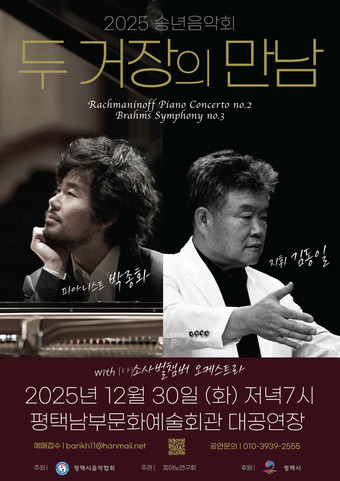Shakespeare's "Romeo and Juliet": Relevance in the Modern Age
- 사회일반 / Issac Kwon 기자 / 2024-06-27 20:00:11
Shakespeare’s Romeo and Juliet depicts the tragic love story of these two characters whose feuding families refuse to acknowledge their feelings for each other. Given the painful reality and many misfortunes resulting in the deaths of several characters, including Mercutio and Tybalt, the two young lovers' fate is challenged. Juliet fakes death to escape a family-arranged marriage to Paris, but Romeo’s unawareness of her plan believes that she is indeed dead and takes his own life. Upon waking to discover Romeo’s dead body, Juliet stabs herself to death.
"Romeo and Juliet" remains relevant today because it explores timeless themes such as love, conflict, and fate. The intense and passionate love story resonates with modern audiences, highlighting the powerful emotions and impulsive decisions often accompanying young love. The feud between the Montagues and Capulets reflects ongoing societal divisions and conflicts, illustrating how prejudice and hatred can lead to tragic outcomes. Additionally, the play's exploration of fate and individual agency continues to provoke thought about how our lives are predetermined versus shaped by our choices. These universal themes ensure that "Romeo and Juliet" remains pertinent across different cultures and eras.
In Act 4, Scene of "Romeo and Juliet," Paris discusses his upcoming marriage to Juliet with Friar Laurence. Juliet arrives, and after Paris leaves, she threatens suicide if Friar Laurence cannot help her avoid marrying Paris. Friar Laurence then proposes a plan: Juliet will take a potion that makes her appear dead for 42 hours and be placed in the Capulet tomb. Romeo will be informed and retrieve her when she awakens so they can escape together.
This scene is relevant because it sets the stage for the tragic turn of events. Juliet's desperation and willingness to go to extreme lengths highlight the intensity of her love for Romeo and her determination to avoid marrying Paris. Friar Laurence's plan, though well-intentioned, ultimately leads to a series of misunderstandings and miscommunications that contribute to the tragic ending.
Paris appears rather pompous in this particular scene. This scene of self-importance is evident during his interaction with Juliet. He calls her his “wife,” and when she proceeds to correct him by claiming “that might be the case” “after” she is “married,” he asserts that the “maybe” “must be” “on Thursday.” His play with the word accentuates his arrogance and his apparent unawareness of her lack of affection towards him. He calls her to confess to Friar Lawrence “that you love me.”Paris’s preposterous presumptions paint a pitiful portrait of his personality (Paris’s preposterous presumption render him a pathetic partner for Juliet.
This scene draws attention, particularly to relationships between men and women. This reality is brought to light through the character of Paris. Commenting on the impact of “many tears” on Juliet’s face and her “slander of her appearance,” Paris asserts “that “thy face is mine” and she has “slandered it.” The words offer no comfort and simply fuel contempt within the render, given the repulsive reality of male dominance over their female counterparts.
Upon Paris’s departure, Juliet launches into a dramatic discourse detailing the deadly consequences should she be forced to marry Paris. These ill intentions are relayed through her words and actions to Friar Lawrence. Holding out “a knife,” Juliet vows to let it “play the vampire” and “slay” her if Friar Lawrence “canst give no help,” The wretched words that personify the knife raise the tension of the scene as the audience awaits Friar Lawrence’s response. His offer of “a thing like death” is met with frenzied fervor by Juliet as she enumerates the atrocities she would rather encounter than marriage to Paris. She vows to “lurk where serpents are,” be “with roaring bears,” “or bid” her to enter “a new-made grave” and “hid” there “with a dead man.” the disturbing direction well depicts the theme of death and gamers, and this depiction, in turn, sets an ominous tone to the passage as a whole.
Another scene that is also relevant in the same act is the interaction between Juliet and Friar Lawrence. Juliet meets with Friar Laurence to seek his help in avoiding her impending marriage to Paris. Friar Laurence devises a plan for Juliet to take a potion that will make her appear dead, which she agrees to to reunite with Romeo.
This particular scene takes place right before Juliert’s disguised death. Here, Friar Lawrence and Juliet are engaged in a dramatic dialogue about a way out of her dilemma: imminent marriage to Paris amid her secret marriage to Romeo. Among the diverse rhetorical strategies employed, Shakespeare effectively uses imagery in the intense interaction to raise the theoretical elements of the play.
Juliet’s language offers the audience a vivid image of her opposition to marriage to Paris. She fervently enumerates the atrocities she would rather encounter than marry him. For instance, Juliet calls on the Friar to challenge her to “leap from off the” battle posts of any tower, to “lurk where serpents are,” and even to “shut” her up “nightly in a charnel house” with “dead men’s rattling bones.” The images are disturbing as they denote death, which is dramatically heightened with diction such as “lurk” and “dead.” The use of onomatopoeia “rattling” also accentuates the portrait of peril. Juliet’s desire to face these dangers instead of being wed to Paris gives the audience a better insight into her desperation.
Similarly, Friar Lawrence often employs similes to make the scene more potent. He offers Juliet “a thing like death” to escape her predicament. Upon taking the “vial,” he claims her “eyes ‘ windows” will “fall like death” as “he shuts up the day of life,” She will be “stiff and stark and cold” and “appear like death.” The straightforwardness of his rhetorical strategies is meant to instill confidence in the audience about the solution's success. However, this simplicity also creates a sense of apprehension, which is proven true when both the female and male protagonists end up taking their own lives. In short, Shakespeare's use of basic literary techniques in the scene sets the stage for a dramatic finale, leaving the audience to grapple with the tension between hope and despair.
Indeed, both Juliet’s and Friar Lawrences' language revolve around the spectator of death. Shakespeare employs imagery to draw affection to this tormenting theme as he gives the audience a visual understanding of desperation, leading to a tragic end for the two young lovers: Romeo and Juliet.
In modern times, "Romeo and Juliet" remains relevant as it explores timeless themes that resonate with audiences across cultures and eras. The intense and passionate love between the titular characters mirrors the powerful emotions and impulsive decisions often associated with young love today. The feud between the Montagues and Capulets reflects ongoing societal divisions and conflicts, offering insights into how prejudice and hatred can lead to tragic outcomes. Moreover, the play's exploration of fate versus free will continues to provoke thought about the influence of external forces on our lives. These universal themes ensure that "Romeo and Juliet" continues to captivate and encourage audiences, making it a timeless masterpiece that speaks to the human condition in any age.
[ⓒ 세계투데이. 무단전재-재배포 금지]
















